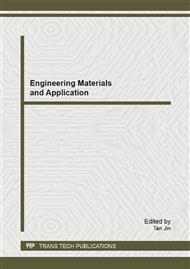[1]
Berg G. J, Assessment of critical voltage and load margins in VAR compensated power transmission systems, Electric Power Systems Research, 1987, Vol. 12, pp.63-69.
DOI: 10.1016/0378-7796(87)90061-7
Google Scholar
[2]
Carlos Fabian Moyano , Roberto Salgado, Luciano Vitoria Barboza , Calculating participation factors in the maximum loadability, IEEE Bologna Power Tech Conference, 2003, June 23rd-26th , Bologna, Italy, 213-223.
DOI: 10.1109/ptc.2003.1304311
Google Scholar
[3]
Irissari.G. D, Wang.G. D, Tong. X and Mokhtari. S, Maximum loadability of power systems using Interior point non-linear optimization method, IEEE Transactions on Power Systems, 1997, Vol. 12, No. 1.
DOI: 10.1109/59.574936
Google Scholar
[4]
Modi.P. K, Singh S.P., Sharma. J, Multi-objective approach for voltage stability using interior point method, National Power Systems conference, 2008, IIT Bombay.
Google Scholar
[5]
Hansen, N. and S. Kern , Evaluating the CMA evolution strategy on multimodal test functions. In X. Yao et al. (Eds. ), Parallel Problem Solving from Nature (PPSN VIII), 2004, Volume 3242 of LNCS, p.282–291. Springer-Verlag.
DOI: 10.1007/978-3-540-30217-9_29
Google Scholar
[6]
Hansen, N. The CMA evolution strategy: A comparing review. In I. I.J. A. Lozano, P. Larra˜aga and E. Bengoetxea (Eds. ), Towards a new evolutionary computation, Advances on estimation of distribution algorithms, 2006, Volume 192 of Studies in Fuzziness and Soft Computing, Springer-Verlag.
DOI: 10.1007/3-540-32494-1_4
Google Scholar
[7]
Zimmerman , MATPOWER 3. 0: A Matlab Power System Simulation Package, Ithaca. NY: Cornell University Press; 1997. Available from: http: /www. pserc. cornell. edu/matpower.
Google Scholar
[8]
Hansen. N, References to CMA-ES applications, 2005 www. bionik. tu-berlin. de/user/niko/cmaapplications. pdf.
Google Scholar
[9]
Federico Milano, 2006: http: /www. uclm. es/area/gsee/web/Federico/psat. htm.
Google Scholar
[10]
Alamelu. SM et. al, Optimal siting and sizing of UPFC Control settings in Wind Energy Conversion Systems, Wind Engineering, 2010, Vol. 34, No. 4, 421-444.
DOI: 10.1260/0309-524x.34.4.421
Google Scholar
[11]
Christie R, Power system test case archive, 1993, University of Washington. Available from: http: /www. ee. washington. edu/research/pstca.
Google Scholar
[12]
Shanmugalatha. A and Mary Raja Slochanal , Maximum loadability limit of a power system using Multiagent based particle swarm optimization, Electric Power components and Systems , 2008, Volume 36 (6): 575-586.
DOI: 10.1080/15325000701801579
Google Scholar


